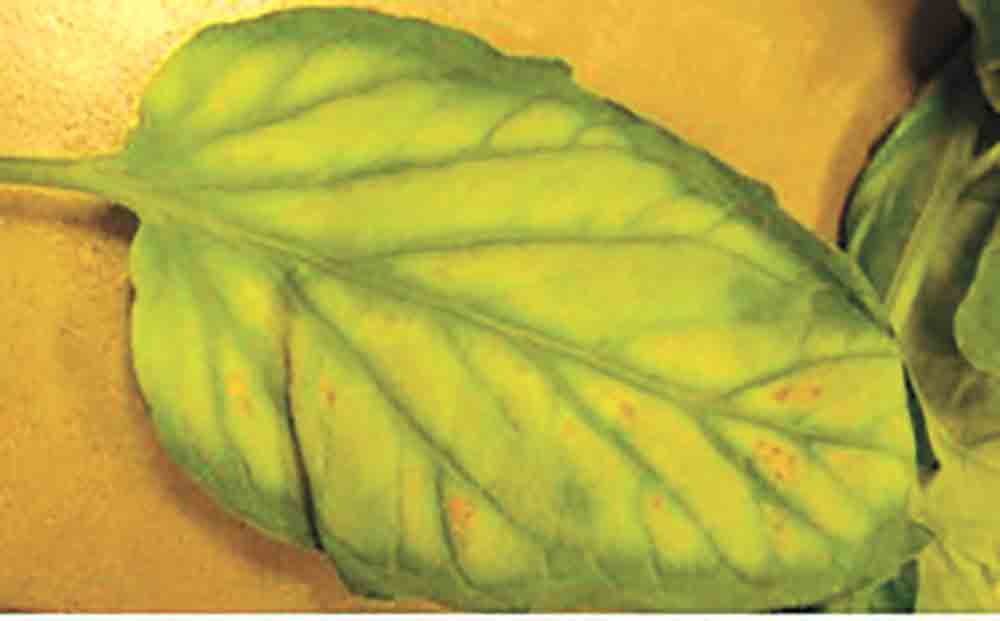
By Matthew R. March, MNRD
Polk County Extension Agent
With spring gardening now right around the corner many gardeners are gearing up for hopefully a successful year. Tomatoes are one crop that will be an essential in almost every garden. A common disorder in tomatoes is magnesium deficiency. By learning the symptoms of magnesium deficiency in tomatoes you will be able to recognize the signs and implement a management strategy.
The main symptom of magnesium deficiency in tomatoes is interveinal chlorosis which is the yellowing of leaves. Interveinal chlorosis is typically developed overtime due to the high nagnesium requirements of tomatoes during later growth stages. Interveinal chlorosis is typically first observed in the lower older leaves. This is a result of the plant moving magnesium from the older leaves to new growth when there is a magnesium deficiency in the soil. The first signs of interveinal chlorosis will be a few localized yellow spots. As magnesium becomes more limiting, yellowing will intensify and can eventually cause advanced symptoms of dark purplish black spotting. When the deficiency is severe enough it can cause dead spots to occur on the leaves. Symptoms seen with magnesium deficiency can also be caused by extremely low pH. If your soil pH is below 5.5, toxic quantities of iron and manganese can be taken up by the plant. A soil test can be conducted to determine the pH and magnesium levels in the soil. By conducting a soil test prior to planting you can implement methods to mitigate the problem if the soil test results in a low pH or magnesium levels.
If you do not recognize a magnesium deficiency until the tomato plants are showing symptoms, Epsom salt, which is composed of magnesium sulfate, makes an easy and practical way to increase magnesium levels in the soil. Epsom salt should be applied at a rate of two pounds per 100 gallons of mixed water through drip or leaching irrigation. Epsom salt will not reverse damage that has already occurred but can prevent future interveinal chlorosis in the leaves.
More information on growing tomatoes can be found on the aggie horticulture website. https://aggie-horticulture.tamu.edu/ This includes guides for both home gardeners and commercial tomatoes growers. The website also includes information on variety selection, disease identification, and solving common problems. In addition to tomatoes, the website includes information on a variety of crops from blueberries to watermelons.
You are a guest
or post as a guest
Be the first to comment.

